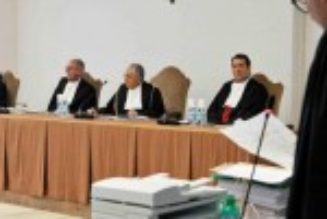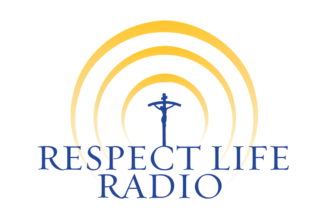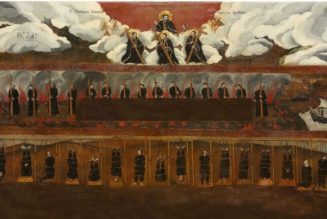
Editor’s note: This essay contains frank discussion of sexuality.
“END WOMEN’S SUFFRAGE!”
According to legend, these words were emblazoned upon a sign at a booth taking signatures for a petition at a Lilith Fair, a popular summer concert series featuring female musicians. A comedian had set up the scam in order to demonstrate the alarming ignorance of the American electorate. The story goes that he collected hundreds of signatures, and no one was the wiser.
This cautionary tale comes to mind nowadays, as I read of clerics of various degrees of rank and prominence calling for changes to the teachings of the Church in general and to the Catechism in particular. Correction: Some assure us that they are not advocating the change of any teaching itself but rather for “just” the language of the teaching. (Doesn’t anyone know about Lex Orandi, Lex Credendi, Lex Vivendi anymore?) Some, in fact, are calling for change in the teaching itself. Both groups agree that the teaching, as presently (and perennially) expressed, causes hurt feelings, and so therefore…
Is sodomy “intrinsically disordered”?
But I’m getting ahead of myself. Let’s first identify a specific teaching as applied to a single moral issue. I’m speaking of the moral tradition of referring to the act of sodomy as “intrinsically disordered.” That is, by the very nature of the act of sodomy, regardless of the agent of the act, the circumstances of the act or the intentions of the agent, the act is, always and everywhere gravely immoral.
Some say that we should no longer evaluate acts of sodomy as “disordered” because to do so may cause emotional distress among the agents and advocates of sodomy. Others go a step further and say we must not call such acts “disordered” because they are in fact not disordered—rather they are simply “differently ordered.”
My purpose here is threefold: 1) to show that using the word “disordered” in the moral evaluation of sodomy is accurate, precise and correct; 2) to show that emotional distress is not a sufficient reason to reword or change the teaching as found in the natural law or the Deposit of the Faith—in fact, even the rewording of the teaching is a failure in Christian charity; 3) to show that for reasons of anatomy, philosophy, and theology, it is impossible to change the teaching itself—hurt feelings notwithstanding.
A chain of hardware stores sponsored commercials ending with the words, “the right tool, for the right job.” I say that the language of order/disorder in the moral evaluation of sodomy is the right tool, for the right job. I start my analysis with the observation that we evaluate instruments in terms of their ability to achieve satisfactorily the ends for which they were made.
For example, a match is a safe, effective, and efficient means for lighting a candle; although a match generates heat, it is an inadequate instrument for melting steel. But that’s not a failure on the part of the match. The failure lies with the agent who chose to use an instrument to achieve an end that is obviously beyond the capacity of the instrument.
Some poor choices lead not only to failure in attaining the intended end; these poor choices also result in the destruction of the instrument. For example, you might be able to crack a walnut with Grandpa’s pocket watch—once. The process will destroy the watch because it was not designed to participate in the process of cracking walnuts; it was in fact quite obviously designed for a different and unrelated process.
Poor choice of an instrument can also lead to the destruction of the agent. If one has spilled gasoline in the dark, one could ascertain the location of the spill by lighting a match. The results certainly would be enlightening—albeit only briefly. Such a process would cost the agent more than just the price of a match.
Not choosing the right tool for the right job can result in failure to attain the desired outcome; it can result in the destruction of the instrument; it can result in the destruction of the agent. Clearly, the selection of the right tool has both practical and moral significance.
Immoral tools
So far, we’ve focused on failure to choose the right tool primarily in terms of effectiveness. But what about an effective means employed for a good end, when the tool itself is immoral?
John wants to pay his tuition for medical school. He finds that bank robbery is much more efficient for acquiring tuition funds rather than, say, working summers and weekends for his father’s catering business. John has found an effective means to a good end, but it is not the “right” tool because it is an immoral one.
The right tool (morally good or at least morally neutral) ought to be efficient; it must also be used for the right job—and for a job to be right, it itself must not be immoral. “I prefer to use a sharp knife when I murder my business rivals” fails the “right job” portion of the “right tool for the right job” equation. Murder is intrinsically immoral.
The demands of the “right tool for the right job” equation are met when a morally sound and practically efficient tool is deployed in a morally sound manner for a morally laudable end. When these demands are met, in terms of instrument, process, end, and agent, we can refer to the whole as “ordered”—and rightly so, independent of anyone’s feelings. The word “ordered” in this context is properly used because, once understood, it can communicate accurately and unambiguously what is the case.
For those who take offense at the language of order/disorder because they do not understand the language used in this specific case, we would do well to remember that “instructing the ignorant” is a spiritual work of mercy. Failure to attempt to instruct the ignorant in this case is a failure of Christian charity.
Love and “lived experience”
We’re now in a position to appreciate the merits of the language of order/disorder in terms of love, which is the ultimate purpose of the ethical life. This statement, depends, of course, upon a proper understanding of the word “love.”
The Medievals spoke of amor benevolentiae—which is poorly translated as “benevolent love”—but it means so much more! To love someone is to will the best for the beloved. What is the best for any beloved? What is best for every human person is union with God, a union begun in this life and continuing into eternity. That union with God is the fruition of holiness. The most reliable path to holiness, the strongest supports for joyful and fruitful chastity, are found within the authentic life and teaching of the Church founded by Christ—the Catholic Church. Anything contrary to the authentic teaching of the Church entrusted to Her by Christ will preclude the life of holiness for which we were made.
Now we can see that the question of applying the language of order/disorder in the moral evaluation of sodomy must be the criterion of love. Is it possible to maintain (and then demonstrate) that acts of sodomy are properly ordered acts—that is, that they are loving acts, achieving the perfection of human nature, which is sanctity, the indispensable condition for union with God, which is the human vocation? Churchmen of various degrees of rank and prominence say “Yes.” For their “Yes” to be rational and moral, there are hurdles of anatomy, philosophy, and theology that they must clear. I hope to show that they cannot clear these hurdles. Consequently, the language of order/disorder in the moral evaluation of acts of sodomy can and ought to be retained. Moreover, requests to change or dismiss the language of order/disorder must be withdrawn, especially by Catholic clerics, regardless of their respective degrees of rank or prominence.
Let’s examine the “lived experience” (as many clerics and theologians so often urge us to do) of four people: Adam and Eve, Malcolm and Steve. Adam and Eve commit to each other in marriage in a manner that is recognized by Church and State. Virgins before marriage, Adam and Eve commit to a monogamous relationship with each other. Acting on their sexual desires, they engage in vaginal intercourse. They expect that with the passage of time that they will beget children. Precisely why they have that expectation need not be recapitulated here; suffice to say that their acts of intercourse are properly ordered.
On the same day, Malcolm and Steve commit to each other in marriage in a manner that is recognized by the State. Virgins before marriage, Malcolm and Steve commit to a monogamous relationship with each other. Acting on their sexual desires, they engage in anal intercourse. They expect that with the passage of time that they will… Well, what do they expect? Better said—what should they expect?
They can expect tears in the rectal cavity, making them susceptible to infections, some of which will be difficult if not impossible to treat. They can expect increased susceptibility to anal cancer. They can expect fecal incontinence, as well as rectal pain and bleeding. With enough repetition, anal fistulas and even anal prolapse are non-trivial possibilities. They cannot expect to beget children via anal intercourse. As you read this incomplete list of what Malcolm and Steve have to look forward to, which word comes to mind first? “Ordered”, or “disordered”?
From the standpoint of anatomy, what Adam and Eve should expect, and what Malcolm and Steve should expect are very different. Why? Quite simply: Adam and Eve are using their bodies, and, respectively, their distinctively male and female genitals in a manner in harmony with their design. The demands of the equation “the right tool for the right job” are satisfied by their acts of vaginal intercourse.
Malcolm and Steve are using their bodies, including their distinctively male genitals in a manner not in harmony with their design. The demands of the equation “the right tool for the right job” are not and cannot be satisfied by their acts of anal intercourse. No clerical exhortation, no linguistic sleight of hand, no alteration of texts can change these facts of anatomy.
Symbols ordered to the right job
The second set of hurdles that advocates of the excision of order/disorder in the moral evaluation of sodomy must clear is philosophical. These hurdles have to do with the nature of symbols. In brief, a symbol is a bridge, a mediator connecting the observer of the symbol and that which is symbolized by the symbol.
It is well for the presence of the invisible reality of marriage to be made visible by a symbol. That’s the “right job” part of the equation. Understanding the “right tool” element in this context is essential. The circularity of the ring, a never-ending shape, symbolizes well the indissolubility of marriage. Likewise, it is fitting that the wedding ring be made of gold or some other precious metal, to symbolize the value and dignity of marriage. In contrast, it would not be fitting to attempt to symbolize the duration and value of marriage by a marriage certificate printed on tissue or toilet paper.
We can take this observation as an occasion to benefit from an examination of symbolism around the world and throughout history. From such an examination we could see that a symbol is the “right tool” if it bears some natural resemblance to what is symbolized. For example, if spiritual cleansing is to be symbolized, then water is a fitting symbol. In contrast, motor oil would be a counter-symbol of the spiritual cleansing that is to be symbolized. Likewise, if spiritual nourishment and joy are to be symbolized, then bread and wine meet the “right tool” criterion for symbols.
Symbols are ordered to the right job of symbolizing visibly the invisible reality to be symbolized. Counter-symbols are disordered symbols, as they fail to do justice to that which is to be symbolized. Indeed, they are tokens of the perversion of that which is to be symbolized. A disordered symbol also fails to do justice to those who need to find that which is to be symbolized. So understood, let’s have another look at the cases of Adam and Eve, Malcolm and Steve.
All societies have privileged the union of man and woman in marriage. Marriage can bring about the moral and spiritual perfection of husband and wife through sacrificial love. Specifically, they can contribute to the good of human society through the begetting and rearing of children. Symbolizing the sacrificial and fruitful love of the husband and wife is the “right job” of the equation. The “right tool” portion of the equation is the vaginal intercourse of Adam and Eve in the context of marriage recognized above all by the Church and incidentally by the State.
In sacrificial and fruitful love, Adam and Eve declare to each other, “I give my whole self to you (including my fertility) absolutely; I accept your whole self (including your fertility) absolutely.” Through vaginal intercourse, Adam invokes God, asks for the gift of new life, and asks God (through Adam) to confer motherhood upon Eve, whose body is ordered/designed for motherhood. At the same time, Eve invokes God, asking for the gift of new life and asks God (through Eve) to confer fatherhood upon Adam, whose body is ordered/designed for fatherhood.
The penis introduces seed-bearing semen into the vagina, which offers an avenue to the cyclically-available ovum. Where sperm meets ovum, there the gift of a new human life may be secured for the necessary period of gestation. On this view, there is no “accidental” (even if unintended) pregnancy. Pregnancy is proof that everything male of the husband and everything female of the wife worked as divinely designed and ordained. We cannot help but apply the word “ordered” to this process.
To be thorough, we must consider the anal intercourse of Malcolm and Steve, in the context of certain jurisdictions that have rewritten the definition of marriage to include the arrangement of these two men. With their anal intercourse, the penis delivers the life-giving seed into the anus. The anus represents death and decay. It is designed to eject dead, masticated, and digested plants and animals. There is no possibility of human life being generated from this process. There will be, however, violence, feces, and harm. If this process is not disordered, then to what is it ordered? This process cannot symbolize complementarity (because in this case Malcolm and Steve can exchange roles) and it cannot symbolize fruitful love because it cannot bring about new human life.
If heterosexual marriage, and what some jurisdictions call same-sex marriage are both equally truly marriage, then symbolically and physically, the intercourse of Adam and Eve and the intercourse of Malcolm and Steve must symbolize the same realities and effect the same results. But this is impossible. Consequently, we can see that those clerics who wish to eliminate the language of order/disorder in the moral evaluation of sodomy have not and cannot clear the unavoidable philosophical hurdles.
Doctrine at the service of divine revelation
Even if (per impossible) objections to the use of the language of order/disorder in the moral evaluation of sodomy overcame the hurdles of anatomy and philosophy, there remain the hurdles of theology. I hope to show that the theological hurdles constitute an insuperable barrier to the advocates of (misleadingly) rewording the doctrine or changing the doctrine outright.
The advocates of doctrinal alteration pursue various strategies. Some say that the doctrine must be reworded because the perennial formulation can cause emotional distress. This is not a serious objection. The language of order/disorder expresses accurately, precisely and unambiguously the meaning of the doctrine. “The right tool for the right job!” People experience emotional distress to this properly formulated doctrine because they do not understand the doctrine, and likely have not been offered the natural and supernatural helps to live the doctrine. The duty of all Catholics, and, a fortiori, the duty of clergy is to instruct the ignorant, one of the spiritual works of mercy. For those who understand the doctrine but refuse to live it, then the duty of all, but especially clergy, is to admonish the sinner, another spiritual work of mercy.
A different strategy is to reject the perennial doctrine because of “scientific discoveries” or “advances in scientific understanding.” As far as I know, these discoveries or advances are not presented in any detail. Unless the scientific breakthroughs include the amendment of the fundamental facts of anatomy described above, I’m left wondering how “the science” advances the cause of the advocates of doctrinal change. Surely, if a man had conceived and gestated a child in his rectum, and then delivered the baby through his anus, that event would be widely known by now.
This appeal to “scientific discoveries and advances” reveals a misunderstanding of both science and doctrine. Science is an attempt to exclude human bias while striving for an accurate account of the data. Analogously, doctrine is an attempt to offer an accurate and faithful account of the contents of divine revelation. Science is right when its account does justice to the data, regardless of the emotional response of the scientist or the general public. The same is true for doctrine. (Anyone uncertain about this would do well to consider the example of Saint Athanasius, and how he merited the title, “Athanasius contra mundum.”)
In this light, we can evaluate a third strategy of those who would alter or dismiss the doctrine. This strategy erroneously (perhaps even disingenuously) attempts to put itself in good company by invoking the authority of Cardinal Newman, by referring to the use of the phrase, “the development of doctrine.” This strategy fails to do justice to Newman, to doctrine, and to divine revelation.
In brief, doctrine truly develops only when it accounts more fully and accurately for the contents of revelation. Doctrine functions to serve revelation and is not the master of the Deposit of the Faith. Doctrine that omits or distorts divine revelation, in order to serve some ideology or agenda fails to be doctrine, just as science that omits or distorts data to serve some ideology or agenda fails to be science.
To be blunt: the content of divine revelation, in the form of Sacred Scripture and Sacred Tradition approve the sacramental marriage of man and woman as the proper venue of the begetting and raising of children and understands marriage to be a school of sacrificial love. Doctrine is sound to the degree that it reflects these elements of the content of divine revelation. The language of order/disorder expresses precisely, accurately, and unambiguously the content of divine revelation’s approbation of the sacramental marital union of man and woman as husband and wife. The language of order/disorder, in this case, is “the right tool for the right job.”
With equal bluntness, the content of divine revelation, including Sacred Scripture and Sacred Tradition, express only divine prohibition and no divine approbation of any acts of sodomy. Even less does the Deposit of the Faith include any suggestion of the possibility of same-sex marriage, with acts of sodomy as the consummation of the marital bond. Doctrine is sound to the degree that it accurately, precisely, and unambiguously reflects these elements of the contents of divine revelation. The language of order/disorder facilitates the expression of a sound doctrinal account of divine proscription and disapprobation. Once again, the language of order/disorder, in the service of sound doctrine, is “the right tool for the right job.”
Removal of the language of order/disorder handicaps sound doctrine and serves no good purpose. Handicapping the expression of sound doctrine does not glorify God and does not help souls. Rather, like it or not, such handicapping is a serious failure in Christian charity. No good is served by denying or obscuring the saving truth to which the members of the Body of Christ have a need and right.
The need for an examination of conscience
Summing up: No emotional appeals, however impassioned, no appeals to dialogue, to listening, to encounter, to accompaniment, to lived experiences—however numerous or imperious they may be—can overcome the hurdles of anatomy, philosophy, and theology that secure the use of the language of order/disorder in the moral evaluation of the acts of sodomy. In our contentious and parlous times, all members of the Body of Christ, especially the clergy, must undergo a profound and humble examination of conscience.
When it comes to explaining and defending the accurate moral evaluation of acts of sodomy as disordered, are we prepared to instruct the ignorant and to admonish the sinner? Are we prepared to take the only truly “pastoral approach” and help confused or stubborn people to form their consciences properly? Are we prepared to offer people the natural and supernatural helps needed to live faithfully some difficult moral truths? Whatever mercy and tenderness may be, they cannot be that which withholds from people saving truths and the means to live those saving truths.
If you value the news and views Catholic World Report provides, please consider donating to support our efforts. Your contribution will help us continue to make CWR available to all readers worldwide for free, without a subscription. Thank you for your generosity!
Click here for more information on donating to CWR. Click here to sign up for our newsletter.









